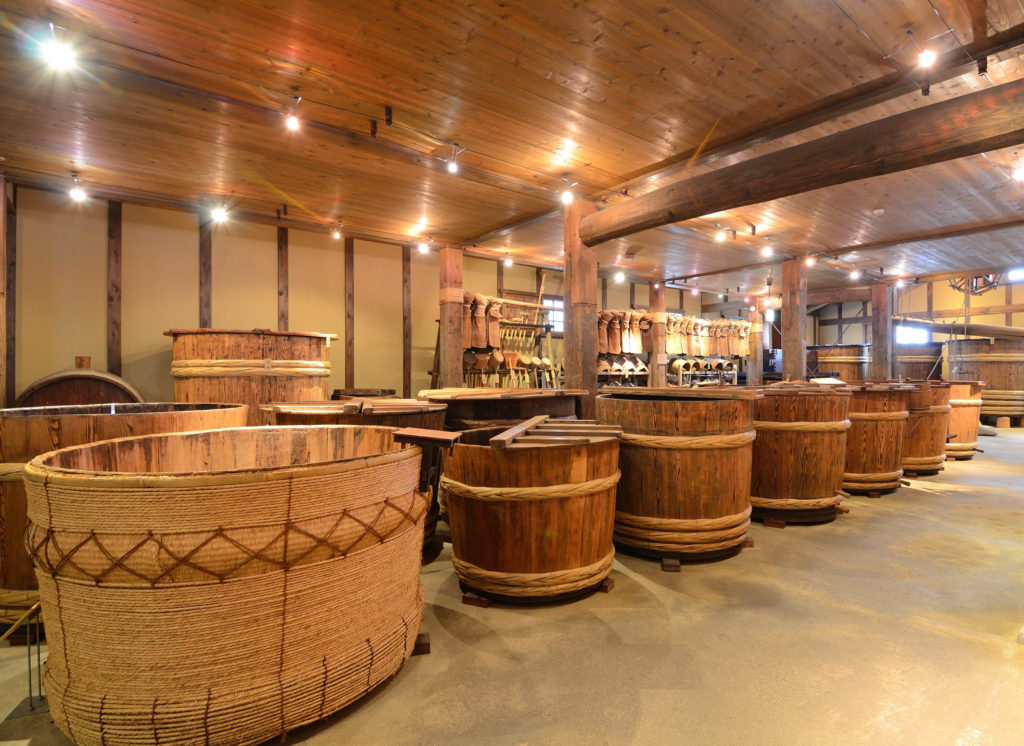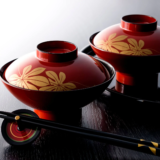The allure of Japanese sake culture lies in its deep history and regional uniqueness. Sake and shochu, traditional alcoholic beverages loved both domestically and internationally, offer unforgettable experiences through brewery tours and tastings, allowing visitors to learn about the production process and savor the flavors. This article introduces the charms of Japanese sake culture for foreign visitors and explains the appeal of brewery tours and tastings.

Sake, also known as nihonshu, is a fermented alcoholic beverage made from rice, water, yeast, and koji mold. With a history spanning thousands of years, it is deeply intertwined with Japan’s climate and culture. Across Japan, numerous breweries produce sake with unique manufacturing methods and flavors. The types of sake vary greatly depending on the production method and ingredients, including junmaishu, honjozoshu, ginjoshu, and daiginjoshu.
1. Junmaishu: Made from only rice, rice koji, and water, junmaishu has a robust rice flavor and pairs well with rich dishes and traditional Japanese cuisine.
2. Honjozoshu: This sake is made by adding a small amount of distilled alcohol to junmaishu. It has a light, smooth taste and complements a wide range of dishes.
3. Ginjoshu: Brewed with highly polished rice and fermented at low temperatures, ginjoshu features a fruity aroma and a smooth, refined taste.
4. Daiginjoshu: With an even higher polishing ratio than ginjoshu, daiginjoshu is a premium sake meticulously crafted. It offers delicate, floral aromas and a deep, complex flavor.

The sake brewing process is intricate, consisting of several key steps. First, polished rice is washed and soaked to achieve the desired moisture content. Then, the rice is steamed, and koji mold is added to create koji. This koji is used to make the yeast starter, known as shubo, which is further fermented in large tanks in a process called moromi. After fermentation, the moromi is pressed to extract the sake, which is then bottled and shipped.
Touring sake breweries across Japan offers a unique opportunity to enjoy local sake, learn about the brewing process, and experience traditional methods. Visitors can take guided tours to see the brewing process and enjoy tastings, often finding exclusive products available only at the brewery’s shop. Here are some recommended breweries for foreign visitors:
1. Fushimi (Kyoto): Located in southern Kyoto, Fushimi is renowned for its sake, thanks to its abundant underground water and highquality rice.
Gekkeikan: Established in 1637, this historic brewery offers tours where visitors can learn about sake’s history and brewing process. The tasting area allows guests to sample a variety of sake.
Kizakura: Founded in 1925, Kizakura is another notable brewery in Fushimi. Visitors can enjoy brewery tours, tastings, and a sake museum.
2. Tsurumi (Hiroshima): Tsurumi City in Hiroshima Prefecture is known for producing highly acclaimed sake, supported by the region’s natural water and environment.
Kamoizumi Brewery: Established in 1873, this historic brewery combines traditional and modern techniques. Tours offer insights into the brewing process, and tastings include various types of sake.
Sempuku: Located in Hiroshima City, Sempuku is a popular brewery offering tours and tastings, particularly known for its junmai ginjo sake.
3. Saijo (Hiroshima): Famous for its sake production, Saijo City has many breweries concentrated in one area. Saijo sake is known for its soft, smooth taste, thanks to the use of soft water.
Hakubotan: Established in 1675, this historic brewery offers tours that provide detailed explanations of the brewing process and tastings.
Kamoizumi: Known for its richflavored junmai sake, Kamoizumi offers tours and tastings in Saijo.
4. Niigata: As one of Japan’s premier riceproducing regions, Niigata is also famous for its sake, characterized by a clear, delicate taste.
Hakkaisan Brewery: Located in Minamiuonuma, Niigata, Hakkaisan is known for its highquality sake. Brewery tours teach about the brewing process using abundant underground water, and tastings include ginjo and junmai sake.
Koshino Kanbai: Located in Niigata City, Koshino Kanbai is renowned for its highquality sake. Visitors can enjoy tours and tastings.
5. Akita: Known for its cold climate and highquality rice, Akita is a famous sakeproducing region. Akita sake is characterized by its rich, fullbodied flavor.
Yukino Bosha: Located in Akita City, Yukino Bosha is popular for its flavorful sake made with unique yeast. Brewery tours offer insights into traditional methods and tastings.
Tensho: Located in Yokote, Akita, Tensho uses locally sourced rice and water to produce highquality sake. Tours offer a glimpse into the brewery’s history and process, along with tastings.
1. Advance Reservations: Many breweries require advance reservations for tours. Check the official websites or call ahead to book your visit. Popular breweries may fill up quickly, so early planning is recommended.
2. Respectful Behavior: Breweries maintain strict hygiene standards for sake production. Follow instructions and maintain cleanliness during the tour. Photography may be prohibited in certain areas, so confirm in advance.
3. Enjoying Tastings: Tastings offer the opportunity to sample various types of sake in small amounts. Take your time to savor the flavors and aromas, and find your preferred sake. Enjoying the unique characteristics of sake from different breweries enhances the experience.
4. Choosing Souvenirs: Brewery shops offer sake for purchase, including exclusive and limitededition items. Consider buying your favorite sake from the tasting or checking out special gift sets, which make great presents.
1. Fushimi and Kyoto Course:
Morning: Visit Fushimi breweries (e.g., Gekkeikan, Kizakura).
Lunch: Enjoy local Kyoto cuisine (e.g., yuba, kaiseki).
Afternoon: Explore Kyoto city attractions (e.g., Kiyomizu Temple, Fushimi Inari Shrine).
Evening: Continue brewery visits and sake tastings.
2. Niigata Course:
Morning: Tour Hakkaisan Brewery.
Lunch: Savor local Niigata dishes (e.g., hegisoba, seafood).
Afternoon: Visit other Niigata breweries (e.g., Koshino Kanbai, Shimeharitsuru).
Evening: Explore Niigata city attractions (e.g., Bandai Bridge, Hakusan Shrine).
3. Hiroshima and Saijo Course:
Morning: Tour Kamoizumi Brewery.
Lunch: Enjoy Hiroshima cuisine (e.g., oysters, okonomiyaki).
Afternoon: Visit other Saijo breweries (e.g., Hakubotan, Kamoizumi).
Evening: Visit Hiroshima city attractions (e.g., Peace Memorial Park, Atomic Bomb Dome).
4. Akita Course:
Morning: Tour Yukino Bosha Brewery.
Lunch: Enjoy local Akita dishes (e.g., kiritanpo hot pot, iburigakko).
Afternoon: Visit Tensho Brewery for tours and tastings.
Evening: Explore Akita city attractions (e.g., Senshu Park, Akita Prefectural Museum).
5. Okinawa Course:
Morning: Tour Okinawa awamori distilleries (e.g., Zuisen Distillery, Kumesen Distillery).
Lunch: Enjoy Okinawan cuisine (e.g., goya champuru, Okinawa soba).
Afternoon: Visit other distilleries and enjoy tastings.
Evening: Explore Naha city attractions (e.g., Shurijo Castle, Kokusai Street).
Japanese sake culture captivates foreign visitors with its history and diversity. Through brewery tours and tastings, experiencing the depth of sake and regional flavors becomes an unforgettable journey. Visiting various breweries allows for a deeper understanding of Japanese traditions and their unique charms.
Brewery tours provide an excellent opportunity to delve into Japanese sake culture. By visiting breweries across Japan and enjoying regional sake, visitors can experience Japan’s culinary culture, history, and natural environment. For foreign visitors, Japanese sake culture offers a fascinating and enriching experience, deepening their appreciation and love for Japan.
Japanese sake culture is diverse, and visiting breweries across different regions allows for a profound appreciation of each area’s unique characteristics and traditions. For foreign visitors, brewery tours offer more than just sightseeing—they provide valuable insights into Japanese culture and environment. Enjoy exploring Japan’s breweries and savoring their unique charms.

 Handn blog
Handn blog 
